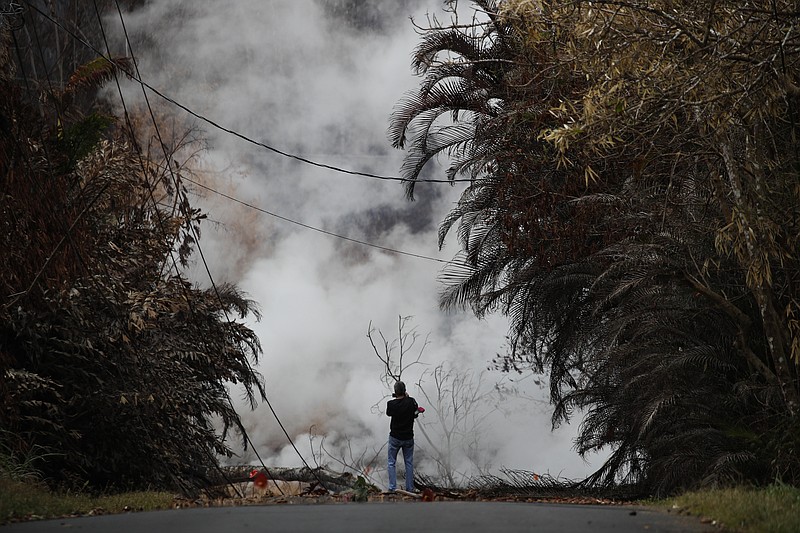PAHOA, Hawaii (AP) - Lava oozing out of cracks for two weeks in rural Hawaii neighborhoods took on new characteristics as fresher magma mixed with decades-old magma, sending a flow toward the ocean Saturday.
Since a first fissure opened in a community May 3, lava was mostly spattering up and collecting at the edges of the cracks in the ground. Two neighborhoods with nearly 2,000 people were forced to evacuate as lava claimed 40 structures.
On Friday afternoon, the lava changed dramatically with one fissure ramping up and sending a flow across a road, destroying four more homes and isolating residents, some of whom had to be air-lifted to safety.
The change is attributed to new magma mixing with 1955-era magma in the ground, creating hotter and more fluid flows, scientists said.
"There's much more stuff coming out of the ground and it's going to produce flows that move further away," said Wendy Stovall, a U.S. Geological Survey volcanologist.
By Saturday morning, two of 22 fissures had merged, creating a wide flow advancing at rates of up to 300 yard per hour. Aerial footage from the USGS showed fast-moving lava advancing to the southeast. The flow was 1.5 miles from the ocean, scientists said.
In the background, the footage showed lava fountaining 328 feet high at one of the fissures. The fountains are created by vents closing, forcing magma to burst through a single outpoint, Stovall said.
If lava threatens main highways, more people will be told to prepare for voluntary evacuation.
Three people were initially trapped, but eventually got out of a hazardous area; one was evacuated by air, Janet Snyder, spokeswoman for Hawaii County, said Saturday. On Friday, four other people were evacuated by county and National Guard helicopters.
"They shouldn't be in that area," County Managing Director Wil Okabe said. He wants people to heed evacuation warnings.
Edwin Montoya, who lives with his daughter on her farm near the site where lava crossed the road and cut off access, said the fissure opened and grew quickly.
"It was just a little crack in the ground, with a little lava coming out," he said. "Now it's a big crater that opened up where the small little crack in the ground was."
Experts are uncertain about when the volcano might calm down.
The Big Island volcano released a small explosion at its summit just before midnight Friday, sending an ash cloud 10,000 feet into the sky. The USGS's Hawaiian Volcano Observatory said eruptions that create even minor amounts of ashfall could occur at any time.
This follows the more explosive eruption Thursday, which emitted ash and rocks thousands of feet into the sky. No one was injured and there were no reports of damaged property.
It came two weeks after the volcano began sending lava flows into neighborhoods 25 miles to the east of the summit.
Several open fissure vents are still producing lava splatter and flow in evacuated areas. Gas is also pouring from the vents, cloaking homes and trees in smoke.
Meanwhile, more explosive eruptions from the summit are possible.

